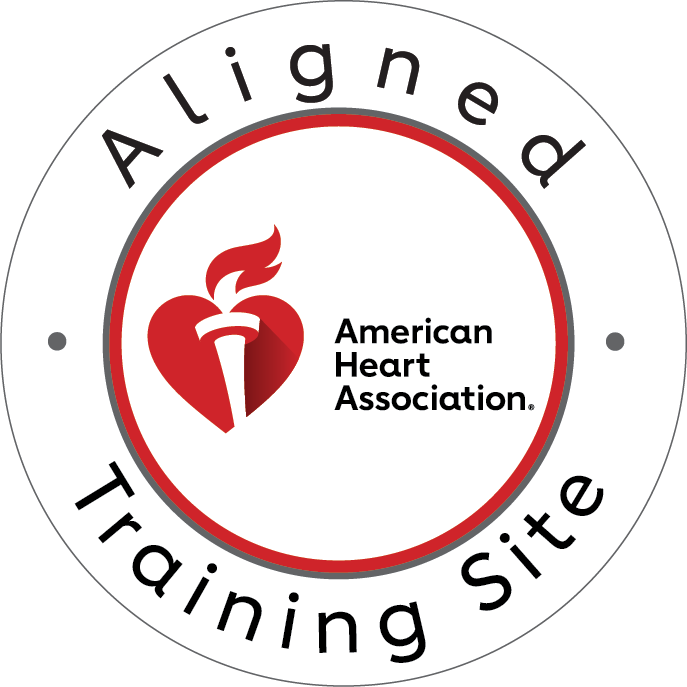The Fundamental Principles of CPR
In emergencies, swift and effective action can mean the difference between life and death. Cardiopulmonary resuscitation (CPR) is a lifesaving technique that everyone should be familiar with, as it can help maintain blood flow and provide oxygen to the brain and vital organs until professional medical assistance arrives.
CPR is a combination of chest compressions and rescue breaths that help circulate oxygenated blood throughout the body. It is a critical first-aid response for individuals experiencing cardiac arrest, a condition where the heart suddenly stops pumping blood. Cardiac arrest can occur due to various reasons, including heart attacks, drowning, choking, or severe trauma.
The fundamental principles of CPR are based on decades of research and continuous updates to ensure the most effective techniques are employed. These principles are designed to be easy to learn and apply, making CPR an essential skill for everyone, regardless of their medical background.
When performed correctly, CPR can significantly increase the chances of survival for someone experiencing cardiac arrest. Studies have shown that immediate CPR can double or even triple a person’s chances of survival. This underscores the importance of understanding and being prepared to administer CPR in an emergency.
The fundamental principles of CPR are centered around three key components: chest compressions, airway management, and rescue breaths. These components work together to maintain vital functions until advanced medical care can be provided.
Chest compressions are the most critical aspect of CPR. By applying forceful and rhythmic pressure to the center of the chest, blood is manually pumped through the body, ensuring that vital organs, including the brain, continue to receive oxygenated blood.
Airway management involves positioning the victim’s head and clearing any obstructions from the airway to allow for effective breathing. This step is crucial as it ensures that rescue breaths can be delivered efficiently.
Rescue breaths, also known as mouth-to-mouth or mouth-to-mask ventilation, provide oxygen to the lungs and help maintain adequate levels of oxygenation in the blood.
Together, these fundamental principles of CPR form a comprehensive approach to sustaining life in emergencies. However, it is essential to note that CPR is not a substitute for professional medical care; it is a temporary measure designed to bridge the gap until emergency services arrive.
When to Perform CPR
Recognizing when to initiate CPR is crucial, as a delay in starting the lifesaving technique can significantly reduce the chances of survival. The first step is to assess the situation and determine if the person is responsive and breathing normally.
If the person is unresponsive, try to rouse them by gently shaking their shoulders and asking loudly, “Are you okay?” If there is no response, check for signs of breathing. Look for the rise and fall of the chest, listen for breathing sounds, and feel for breaths on your cheek. If the person is not breathing or only gasping, it is an indication of cardiac arrest, and CPR should be initiated immediately.
In some cases, the person may be conscious but experiencing severe breathing difficulties, such as from a heart attack, near drowning, or choking. In these situations, CPR may also be necessary to help maintain oxygenation and circulation until emergency medical services (EMS) arrive.
Once you have determined that CPR is required, it is essential to call for emergency medical assistance immediately. If you are alone, call emergency services first and then begin CPR. If others are present, have someone call emergency services while you start CPR. Provide the dispatcher with your location and any relevant details about the situation.
Initiating CPR promptly is crucial because every minute that passes without blood flow and oxygenation can lead to further brain damage and decrease the chances of survival. Acting quickly and correctly can make a significant difference in the outcome.
The CAB Sequence
The fundamental principles of CPR are organized into a sequence known as CAB, which stands for Circulation, Airway, and Breathing. This sequence is designed to prioritize the most critical steps and ensure that blood flow and oxygenation are maintained effectively.
C: Chest Compressions Chest compressions are the first and most critical step in the CAB sequence. They help maintain blood flow to vital organs, including the brain, heart, and lungs. To perform chest compressions correctly, follow these steps:
- Position the person on a firm, flat surface.
- Kneel beside the person’s chest, placing the heel of one hand on the center of the chest, between the nipples.
- Place your other hand on top of the first, interlocking your fingers.
- Keeping your arms straight, use your body weight to compress the chest at least 2 inches (5 cm) deep for adults and approximately 1/3 the depth of the chest for infants and children.
- Compress at a rate of 100 to 120 compressions per minute, allowing the chest to recoil fully between compressions.
Proper hand positioning, compression depth, and rate are essential for effective chest compressions. It is also crucial to minimize interruptions in compressions, as even brief pauses can significantly reduce the effectiveness of CPR.
A: Airway After initiating chest compressions, the next step is to open and maintain the person’s airway. This ensures that rescue breaths can be delivered effectively. Follow these steps:
- Tilt the head back gently by lifting the chin with one hand while pushing down on the forehead with the other hand.
- If there are any visible obstructions, such as vomit or food particles, sweep them out of the mouth with your fingers, being careful not to push them further down the airway.
Maintaining an open airway is crucial for effective rescue breathing and oxygenation during CPR.
This section covers the CAB sequence’s critical components: chest compressions and airway management. By following these steps correctly, you can help maintain blood flow and oxygenation until emergency medical services arrive. The next part will discuss the importance of rescue breaths and the proper technique for delivering them.
B: Breathing
After establishing chest compressions and opening the airway, the final step in the CAB sequence is to provide rescue breaths. These breaths help deliver oxygen to the lungs and bloodstream, which is essential for maintaining oxygenation during cardiac arrest.
To provide rescue breaths, follow these steps:
- With the person’s airway open, pinch their nose closed with your thumb and forefinger.
- Take a normal breath and place your lips around the person’s mouth, creating a tight seal.
- Give two slow breaths, each lasting about one second, watching for the chest to rise.
- If the chest does not rise, reposition the head and try again.
The ratio of compressions to breaths for adult CPR is 30 compressions followed by 2 breaths. For infants and children, the ratio is slightly different, with 30 compressions followed by 2 breaths for a single rescuer, and 15 compressions followed by 2 breaths for two rescuers.
It’s important to note that if you are not trained in rescue breathing or are uncomfortable performing mouth-to-mouth ventilation, you can still provide hands-only CPR by continuing chest compressions without rescue breaths. While not as effective as combined compressions and breaths, hands-only CPR can still help maintain some blood flow and increase the chances of survival.
In situations where the person is unconscious but still breathing, rescue breaths are not necessary. Instead, focus on monitoring their breathing and performing chest compressions if they stop breathing or show signs of cardiac arrest.
Continuous Chest Compressions
One of the most critical aspects of effective CPR is minimizing interruptions in chest compressions. Even brief pauses can significantly reduce the effectiveness of CPR and decrease the chances of survival.
During CPR, it is essential to keep chest compressions going continuously, switching compressors if necessary to prevent fatigue. Fatigue can lead to improper compression depth and rate, reducing the effectiveness of CPR.
If you are performing CPR alone, you should continue chest compressions for about two minutes before checking for signs of life and calling emergency services if you haven’t already done so. If there are multiple rescuers present, you can switch compressors every two minutes to maintain the quality of compressions.
Automated External Defibrillators (AEDs)
In many public places, such as airports, shopping malls, and office buildings, automated external defibrillators (AEDs) are available. These portable devices can analyze the heart’s rhythm and deliver an electric shock, known as defibrillation, to restore a normal heart rhythm in cases of ventricular fibrillation or pulseless ventricular tachycardia.
If an AED is available, it should be used in conjunction with CPR. Follow the AED’s voice prompts and visual instructions to properly attach the pads to the person’s bare chest and deliver the shock when advised. After delivering the shock, immediately resume CPR, starting with chest compressions.
AEDs are designed to be user-friendly and provide step-by-step instructions, making them an invaluable tool for both trained and untrained individuals in emergencies.
Continuous chest compressions and the proper use of AEDs are crucial components of effective CPR. By minimizing interruptions and using available defibrillation devices, you can increase the chances of survival for someone experiencing cardiac arrest.
Special Considerations
While the fundamental principles of CPR remain the same, there are special considerations to keep in mind when performing CPR on certain individuals or in specific situations.
CPR for Infants and Children: The techniques for CPR on infants (under 1 year old) and children (1 to 8 years old) differ slightly from those used on adults. Here are some key differences:
Compression Technique:
- For infants, use two fingers to compress the breastbone, about one-third the depth of the chest.
- For children, use one or two hands to compress the breastbone, about one-third the depth of the chest.
Compression-to-Breath Ratio:
- For a single rescuer, the ratio is 30 compressions to 2 breaths for both infants and children.
- For two rescuers, the ratio is 15 compressions to 2 breaths for both infants and children.
Rescue Breaths:
- For infants, cover both the mouth and nose with your mouth to deliver breaths.
- For children, pinch the nose and breathe into the mouth.
CPR for Pregnant Women: Performing CPR on a pregnant woman requires special consideration for the developing fetus. Follow these guidelines:
- Position the woman on her back, tilting her body to the left to prevent compression of the inferior vena cava (a major vein) by the weight of the fetus.
- Perform chest compressions slightly higher on the sternum than for a non-pregnant person.
- Be prepared to deliver emergency childbirth if the woman is in the late stages of pregnancy and shows signs of imminent delivery.
CPR in Specific Situations:
- Drowning: If the person has experienced a drowning incident, perform CPR immediately, even if water is present in the airway. The priority is to restore breathing and circulation.
- Choking: If the person is conscious and coughing forcefully, encourage them to continue coughing to expel the object. If the person becomes unconscious, begin CPR, incorporating back blows and abdominal thrusts as needed to dislodge the obstruction.
- Traumatic Injuries: In cases of severe bleeding or traumatic injuries, apply firm and direct pressure to the wound(s) while initiating CPR. Controlling bleeding takes priority over rescue breaths.
- Electric Shock: If the person has been electrocuted, ensure the power source is disconnected before approaching and initiating CPR. Watch for signs of entry and exit wounds from the electric current.
These special considerations highlight the importance of tailoring CPR techniques to the specific needs of the individual and situation. Remaining vigilant and adapting your approach can increase the chances of a successful outcome.
Maintenance of CPR Skills
Effective CPR requires not only knowledge of the fundamental principles but also regular practice and recertification to maintain proficiency. CPR skills can deteriorate over time, making it essential to refresh your training periodically.
Importance of Regular Training and Recertification: CPR guidelines and techniques are continually updated based on the latest research and scientific evidence. Attending regular training courses ensures that you are familiar with the most current recommendations and best practices. Many organizations, such as the American Heart Association and the American Red Cross, offer CPR certification courses that typically need to be renewed every two years.
Practicing with CPR Manikins: Hands-on practice is crucial for developing muscle memory and maintaining confidence in performing CPR. CPR manikins, which are life-size models designed for practicing compressions and rescue breaths, provide a safe and controlled environment for skill development. Many training facilities and organizations offer access to CPR manikins for practice sessions.
Staying Up-to-Date with the Latest Guidelines: In addition to attending recertification courses, it’s essential to stay informed about any updates or changes to CPR guidelines. Professional organizations and healthcare authorities regularly release new recommendations based on emerging research findings. Staying up-to-date with these guidelines can help ensure that you are providing the most effective CPR possible.
Encouraging Workplace and Community Training: Workplaces and communities can play a vital role in promoting CPR readiness by offering training opportunities and encouraging participation. Many organizations offer on-site CPR training for employees, while community centers and local health agencies may provide classes for the general public.
By prioritizing the maintenance of CPR skills, individuals and organizations can contribute to a more prepared and responsive community. Regular training and practice can help ensure that individuals are equipped to act quickly and effectively in emergencies, potentially saving lives.
Conclusion
The fundamental principles of CPR are essential knowledge for everyone, as they provide a critical lifeline in emergencies. By understanding when to perform CPR, following the CAB sequence, minimizing interruptions in chest compressions, and considering special situations, individuals can increase the chances of survival for someone experiencing cardiac arrest.
However, it’s important to remember that CPR is a temporary measure designed to bridge the gap until professional medical assistance arrives. It should never be considered a substitute for seeking prompt emergency medical care.
If you live in the St. Louis area, consider taking action today by enrolling in a CPR certification course offered by CPR St. Louis. As an American Heart Association training site, they provide high-quality, hands-on training in a stress-free environment. Courses are available for BLS for Healthcare Providers, ACLS, and PALS, as well as CPR and First Aid certifications.
Encouraging widespread CPR training and ensuring that individuals maintain their skills through regular practice and recertification can contribute to a more prepared and responsive community. By empowering people with the knowledge and confidence to act quickly in emergencies, we can potentially save countless lives and make a profound impact on public health and safety in St. Louis.
Remember, the ability to perform CPR is a valuable skill that everyone should possess. By familiarizing yourself with the fundamental principles through CPR certification in St. Louis and committing to regular training, you can be prepared to make a life-saving difference when it matters most. Don’t wait – enroll in a course today and gain the confidence to act in an emergency.




